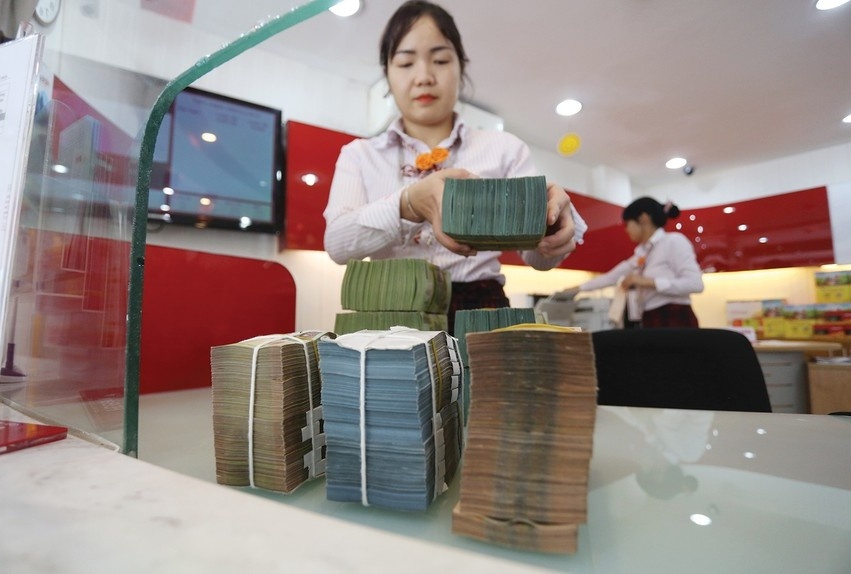State Bank exec discusses credit rating system development
 The State Bank has recently urged banks to push up their unsecured lending by developing an internal credit rating system. Could you comment on their progress so far?
The State Bank has recently urged banks to push up their unsecured lending by developing an internal credit rating system. Could you comment on their progress so far?
Sure. In early 2013, the State Bank enacted Circular 02/2013/TT-NHNN on the classification of assets, level and method of risk provisioning to help banks deal with operational risks.
Specifically, item 3, clause 5 in that circular stipulated that credit institutions and foreign bank branches need to develop an internal credit rating system for rating customers that, when necessary, could serve to filter out bad borrowers, help banks make better decisions, improve credit quality, and devise policies to mitigate risk commensurate with a particular bank’s operational scale and real situation.
This acts as the legal base for banks to provide unsecured loans, as businesses right now are finding it hard to access bank capital and have little collateral to put up.
However, whether banks choose to use the credit rating system or not when disbursing loans is their choice, and at their own risk.
Those with a trustworthy credit rating system that uses information from the Credit Information Centre (CIC) and that control risk effectively can ideally boost lending though unsecured loans.
What’s the ratio of ‘healthy firms’ based on the CIC’s appraisal?
Each year the CIC gives a credit rating to around 25,000 businesses that represent around 20 per cent of the total number of firms with established banking relationships. There are certain differences in respect to the rate of ‘good firms’ in specific areas, as well as operational scope.
Our centre’s credit rating results last year showed that healthy companies accounted for 58 per cent of the total.
In fact, it has been reported that more than a few banks are doubtful of a credit rating system due to a lack of transparency regarding the input information used to develop firms’ ratings. Is this case?
The most challenging task in assessing an appropriate credit rating is that firms lack transparency in their financial reporting due to the low rate of audited financial statements.
To address that dilemma and ensure accuracy of the results, it is important that we cross-check the information provided by other sources. This could involve comparing the financial statements presented by banks with those from the General Statistics Office and General Department of Customs, tracing firms’ credit relations with credit organisations, or looking at financial changes over the course of a firm’s operations.
Financial reports that have been ‘massaged’ can easily be identified if firms have been operating for more than three years, as there will be a lack of uniformity across their reporting periods.
Most banks have not yet started work on an internal credit rating system. Can this effort be pushed forward?
Using a credit rating system is becoming more popular these days in Vietnam. Some banks have developed a system already, particularly after the State Bank enacted Circular 02.
I believe this practice will further expand in the coming time. From their side, firms will be more active and transparent in delivering information to banks, as this will open the door for them to access capital.
What the stars mean:
★ Poor ★ ★ Promising ★★★ Good ★★★★ Very good ★★★★★ Exceptional
Latest News
More News
- HDBank in triple victory at listed company awards (November 25, 2024 | 11:38)
- Malaysia's Solarvest and Finhero launch first solar financing fintech solution in Vietnam (November 22, 2024 | 19:50)
- SHB honoured at VLCAs for fourth time (November 22, 2024 | 19:08)
- Central Bank of Cuba chief visits Hanoi to work with VBSP (November 22, 2024 | 15:49)
- Credit sees steady growth towards year-end (November 21, 2024 | 17:46)
- HDBank wins three titles at Vietnam Listed Company Awards (November 21, 2024 | 10:01)
- VLCA’s corporate governance mission (November 21, 2024 | 10:00)
- The promotion of ESG via banking (November 21, 2024 | 09:32)
- Standard Chartered committed to Vietnam’s financial success (November 21, 2024 | 09:24)
- Full ESG adoption the priority for Agribank (November 21, 2024 | 09:07)



















 Mobile Version
Mobile Version